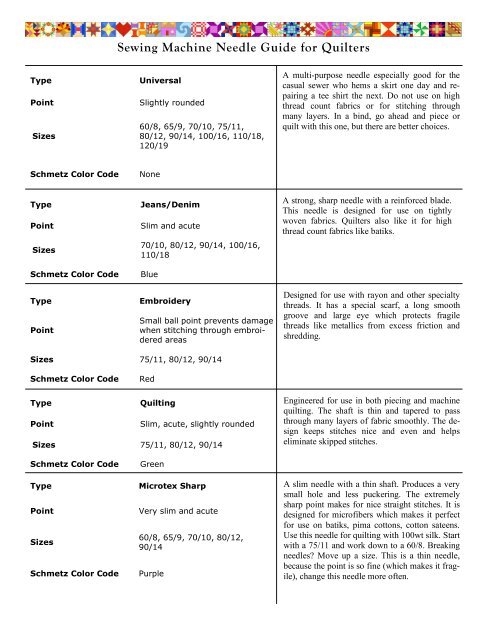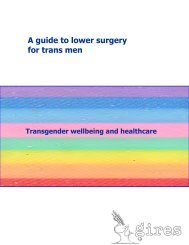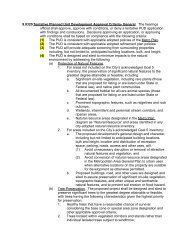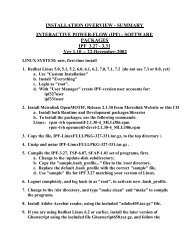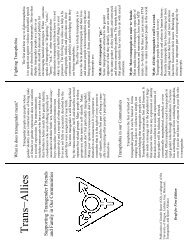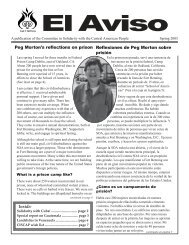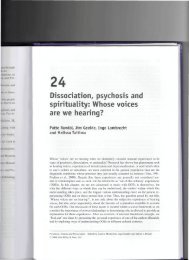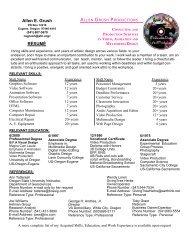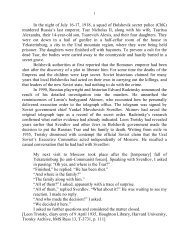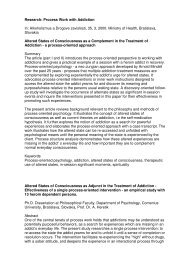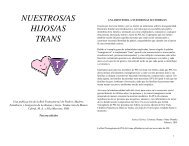Sewing Machine Needle Guide for Quilters - Members.efn.org
Sewing Machine Needle Guide for Quilters - Members.efn.org
Sewing Machine Needle Guide for Quilters - Members.efn.org
You also want an ePaper? Increase the reach of your titles
YUMPU automatically turns print PDFs into web optimized ePapers that Google loves.
Type Universal<br />
Point Slightly rounded<br />
Sizes<br />
Schmetz Color Code None<br />
Type Jeans/Denim<br />
Point Slim and acute<br />
Sizes<br />
Schmetz Color Code Blue<br />
Type Embroidery<br />
Point<br />
60/8, 65/9, 70/10, 75/11,<br />
80/12, 90/14, 100/16, 110/18,<br />
120/19<br />
70/10, 80/12, 90/14, 100/16,<br />
110/18<br />
Small ball point prevents damage<br />
when stitching through embroidered<br />
areas<br />
Sizes 75/11, 80/12, 90/14<br />
Schmetz Color Code Red<br />
Type Quilting<br />
Point Slim, acute, slightly rounded<br />
Sizes 75/11, 80/12, 90/14<br />
Schmetz Color Code Green<br />
Type Microtex Sharp<br />
Point Very slim and acute<br />
Sizes<br />
Schmetz Color Code Purple<br />
<strong>Sewing</strong> <strong>Machine</strong> <strong>Needle</strong> <strong>Guide</strong> <strong>for</strong> <strong>Quilters</strong><br />
60/8, 65/9, 70/10, 80/12,<br />
90/14<br />
A multi-purpose needle especially good <strong>for</strong> the<br />
casual sewer who hems a skirt one day and repairing<br />
a tee shirt the next. Do not use on high<br />
thread count fabrics or <strong>for</strong> stitching through<br />
many layers. In a bind, go ahead and piece or<br />
quilt with this one, but there are better choices.<br />
A strong, sharp needle with a rein<strong>for</strong>ced blade.<br />
This needle is designed <strong>for</strong> use on tightly<br />
woven fabrics. <strong>Quilters</strong> also like it <strong>for</strong> high<br />
thread count fabrics like batiks.<br />
Designed <strong>for</strong> use with rayon and other specialty<br />
threads. It has a special scarf, a long smooth<br />
groove and large eye which protects fragile<br />
threads like metallics from excess friction and<br />
shredding.<br />
Engineered <strong>for</strong> use in both piecing and machine<br />
quilting. The shaft is thin and tapered to pass<br />
through many layers of fabric smoothly. The design<br />
keeps stitches nice and even and helps<br />
eliminate skipped stitches.<br />
A slim needle with a thin shaft. Produces a very<br />
small hole and less puckering. The extremely<br />
sharp point makes <strong>for</strong> nice straight stitches. It is<br />
designed <strong>for</strong> microfibers which makes it perfect<br />
<strong>for</strong> use on batiks, pima cottons, cotton sateens.<br />
Use this needle <strong>for</strong> quilting with 100wt silk. Start<br />
with a 75/11 and work down to a 60/8. Breaking<br />
needles? Move up a size. This is a thin needle,<br />
because the point is so fine (which makes it fragile),<br />
change this needle more often.
Type Topstitching<br />
Point Sharp, extra pointy<br />
Sizes 80/12, 90/14, 100/16<br />
Schmetz Color Code None<br />
Type Metallic<br />
Point Universal point<br />
Sizes 80/12, 90/14, 100/16<br />
Schmetz Color Code None<br />
The two most important things to remember about sewing<br />
machine needle sizes are:<br />
1. Choose the needle eye based on the thread you use. The thread should pass<br />
through the needle eye with the minimum amount of friction.<br />
2. Choose a needle size just large enough to get the job done. A needle that's too<br />
big leaves unsightly holes.<br />
<strong>Needle</strong>s range is size from very fine 60\8 to a heavy duty needle 120/19. Most needles<br />
use the two number measuring system. The higher number relates to the metric<br />
system used in <strong>for</strong>eign counties. It defines the needle shaft diameter in fractions of a<br />
millimeter. The lower number relates to the system in the U.S and is used to indicate<br />
needle shaft diameter.<br />
Designed with a very long (2mm) eye and large groove<br />
<strong>for</strong> use with heavy topstitching thread. The eye is the<br />
same size in all topstitching needles. Use with decorative<br />
machine quilting threads that need some babying like<br />
metallics. This needle comes in large sizes. Larger needles<br />
leaves larger holes. Match your needle to your chosen<br />
thread.<br />
It has a very large (2mm) eye that is polished and Teflon<br />
coated to help thread flow smoothly through to prevent<br />
breakage. The eye is the same size <strong>for</strong> all metallic needles.<br />
The groove down the front is deep to protect delicate<br />
threads from shredding. The needle scarf is larger and<br />
designed to prevent skipped stitches.<br />
<strong>Needle</strong> Anatomy<br />
The scarf of the needle<br />
is on the backside just<br />
above the eye.<br />
Keep Track of All Those <strong>Needle</strong>s<br />
Sometimes during a quilt project, you'll switch to a different thread and<br />
need to use a different needle. Use this handy trick to keep these "used but<br />
still good" needles separated from the brand spanking new ones still in the<br />
package. Take a good old tomato pin cushion. With a Sharpie pen, write in<br />
each section the size and type of the various sewing machine needles that<br />
you frequently use. Time to change your needle? Remove the "used but still<br />
good" needle from your machine and insert it into its proper place in the<br />
pin cushion. When you remove a needle from the pin cushion to use in<br />
your sewing machine, put a decorative pin in its place. That way with just a<br />
look, you'll be able to tell which needle is in your machine.


